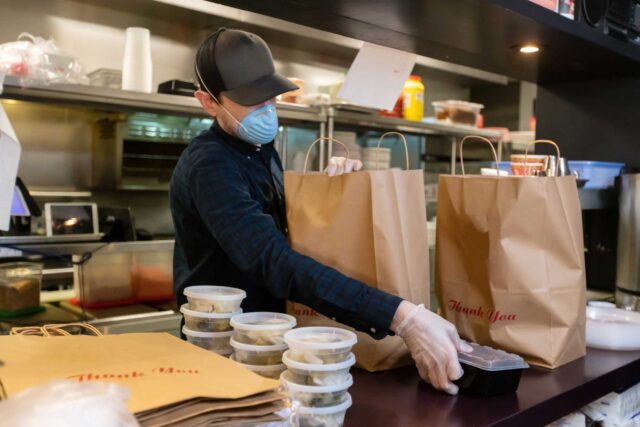The California economy ended the year with another setback. In December, jobs in California declined for the first time since April 2020. Unemployment ticked up to 9%—erasing November gains—and placing most of the impact on job sectors most affected by the pandemic.
While employment in California fell by 52,200 jobs between November and December, the news wasn’t all bad: there was job growth in many sectors, including construction (+31,600), professional and business services (+20,300), and health care (+8,500). But job loss in other sectors was greater, especially in accommodation and food services (-97,300), entertainment and recreation (-19,700), and other services (-11,000).
Overall, jobs are down 8% compared to one year ago. In hard-hit sectors, jobs are down 27% compared to December 2019; in the less- and least-affected sectors, jobs are down 5.2% and 3.7%, respectively. These patterns mimic trends we’ve seen all year—workers in face-to-face service sectors endured the largest initial job losses in April and have seen limited recovery since the summer. Because these jobs tend to be lower wage, this pattern implies that income inequality has likely escalated during the recession.
To better understand the recession and help shape a recovery, it’s important to consider how economic conditions differ vastly across the state. Over the past year, five large metros stand out as having lost a larger share of jobs than statewide: three Bay Area metros (San Francisco, Oakland, Santa Rosa) and two Los Angeles area metros (Los Angeles and Anaheim-Irvine). These metros need to recover between 8.4% and 9.9% of jobs to return to pre-recession levels of employment.
The composition of the economy and workforce drives regional differences, but not completely. Before the pandemic, Santa Barbara-Santa Maria had the highest share of workers in the “hardest hit” sectors, at 18% of the workforce. San Diego, Anaheim-Irvine, and San Francisco were next with about 16%. Based on sector composition and statewide trends, we would expect jobs overall to be down 9.4% in Santa Barbara, but jobs are down by a relatively smaller 7.5%. San Diego, Riverside, Sacramento, San Jose, Fresno, and Stockton are also doing better than expected.
The opposite is true for San Francisco, Oakland, Santa Rosa, and, to a lesser degree, Los Angeles. There, job loss is worse than expected based on workforce composition.
Employment is faring worse than the industry mix for reasons specific to each region, and regions faring worse have seen above average losses across most sectors, not just the hardest-hit ones. For example, San Francisco metro lost a larger share of jobs in the hardest hit sectors than any other metro (33%) and had high losses in the less- (7%) and least-affected (4%) sectors. This may reflect reduced demand for many services as more workers went remote, particularly services catering to downtown office workers. Differences in local stay-at-home orders, social distancing, and virus spread all likely contribute as well.
As economic conditions in face-to-face service sectors will drive so much of the recovery, controlling COVID-19 and distributing vaccines are critical priorities. Efforts by state leaders to increase the scale and reach of vaccine distribution and to meet new goals—both from Governor Newsom and President Biden—are crucial for ramping up economic activity and getting the recovery back on track.






